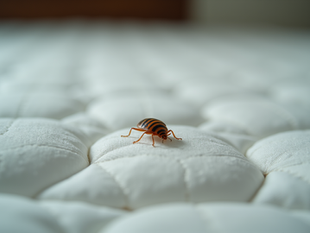
Can Bedbug Inspection Canines Find and Show You Bugs After Their Sniffing Inspection?
16
76
1
In recent years, the use of specialized dogs to detect bedbugs has gained popularity as a reliable method for pest control. It’s no surprise that homeowners and business owners are asking whether these canines can show the bugs after sniffing around the premises. This article explores how bedbug detection canines work, what to expect during a sniffing inspection, and the limitations of this method.

Understanding Bedbug Inspection Canines
Bedbug detection canines are specially trained dogs known for their excellent sense of smell. Breeds like beagles and Labradors are often chosen for this purpose because they can detect the scent of bedbugs and their eggs with remarkable accuracy. Studies show that well-trained canines can achieve detection rates as high as 95% in optimal conditions.
The training for these dogs goes beyond basic commands. They learn to identify the specific scents of bedbugs while ignoring other distractions. This rigorous preparation allows them to search through homes, hotels, and businesses effectively, pinpointing areas that might need closer inspection.
How the BedBug Inspection Works
During a bedbug sniffing inspection, the dog and its handler systematically move through the area. The handler watches for specific behaviours that signal the presence of bedbugs. For instance, if the dog stops and focuses intently on a particular location, it suggests that bedbugs might be nearby.
It’s essential to understand that the dog's role is primarily to detect scents. While they may indicate an area where bedbugs are likely present, they do not physically show you the bugs. This distinction is crucial for setting your expectations during the inspection process.

What Happens After Detection?
Once the canine identifies a potential bedbug-infested area, a human pest control expert takes over. The handler will point out the affected areas but cannot show you the actual bugs immediately. This may be frustrating, but it is part of the process.
After the dog's alert, a thorough examination is conducted by a pest control professional. This may involve visual checks and possibly setting traps to confirm the presence of bedbugs. Studies reveal that about 92% of reported bedbug infestations are verified through follow-up inspections, emphasizing the need for professional assessment after canine detection.
Homeowners should be prepared for this next step and understand that the dog's detection is just the start of a comprehensive pest management plan.
Limitations of Bedbug Detection Canines
While bedbug canines are highly effective, they have limitations. For instance, dogs may struggle to locate bugs if the infestation is minimal, or if the environment is cluttered with items that can mask the scent. A study by the National Pest Management Association found that nearly 10% of inspections in disordered environments resulted in false negatives.
Environmental factors, such as strong odours from cleaning products or perfumes, can also hinder a dog's ability to detect bedbugs. As a result, using canines alongside traditional inspection methods is advisable. A combination of techniques enhances the likelihood of identifying and eradicating an infestation.
The Importance of Proper Training
The effectiveness of canines in bedbug detection largely hinges on their training. Not every dog has the capabilities to learn these specific scent detection skills. The training process includes not only scent recognition but also socialization and developing a strong work ethic so that dogs can perform well under inspection conditions.
Handlers are equally important. Their skill in interpreting the dog's alerts significantly impacts the inspection's success. Homeowners should seek certified detection dog teams, ensuring that both the canine and the handler are highly trained for optimal results.
What Should Homeowners Prepare For?
Homeowners planning a bedbug inspection with canines should prepare their space in advance. Clutter can obstruct a dog's ability to work effectively, so it is beneficial to clean up areas where the inspection will take place. Removing unnecessary items and minimizing strong odours, such as from air fresheners, will create an ideal environment for detection.
Being proactive can not only streamline the inspection process but also provide peace of mind, knowing you have contributed to creating a suitable environment for the canine to perform its job.
Final Thoughts
While bedbug detection canines are highly effective in identifying potential infestations, they cannot provide immediate visual confirmation of the bugs themselves. Their primary role is to detect scents and alert pest control professionals, who will further investigate the situation.
By understanding the process surrounding bedbug detection canines, both homeowners and business owners can better manage their pest control strategies and expectations. Investing in a thorough approach—using well-trained canine inspectors followed by expert assessments—will significantly increase your chances of resolving a bedbug problem smoothly.
Ultimately, while bedbug canines may not visually confirm the presence of live bugs, their detection capabilities are vital for addressing infestations effectively. With the right preparation and understanding, you can tackle this challenge head-on and reclaim your space.







Great Customer Service , Price was very fair and they did a GREAT JOB…I would definitely recommend